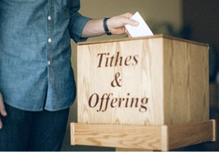UNDERSTAND
WHY AND HOW PEOPLE GIVE
In
continuing my reading of the booklet put out by VANCO, titled The Complete
Guide to Church Stewardship, I read about the sixth of eight rules for
effective church leadership: Understand Why and How People Give
We often group everyone
together with we talk about giving. We approach everyone the same way. And we
make assumptions that if get new people in the pews, that giving will increase.
I don’t believe any of these ideas or these assumptions are appropriate.
There
are giving trends that we need to be aware of: (a) some people give lump sums;
(b) some budget their giving and give accordingly; and (c) some only give when
they’re at church. So where do your givers fall? More in attendees, more in
regular consistent giving or? Online giving can help flatten some of this out.
New
people usually give less than current people. How you approach new people who
don’t have the habit of giving generously should be far different from how you
approach people who are generous and regular givers. A campaign can have
different approaches for different givers, such as different letters. Tailor
your wording to your givers.
If some people are already
regular givers, asking them to give a larger amount makes sense. They’re
already invested in your church and are more likely to react positively to this
ask.
If there are others who
have previously pledged but aren’t pledging currently, you might want to
approach them to invite them back in. They may only give sporadically; encouraging
them to pledge will help increase that group’s level of giving.
For
those who haven’t given before, a different approach may make more sense. Encouraging
giving by having a matching gift, up to a certain amount could motivate them.
Telling them what giving can accomplish may also be new to them.
Look
at how giving is currently structured and plan accordingly.
If you wish more information on anything
you’ve been reading about, please feel free to contact me at (315) 427-3668 or sranousacctg@twcny.rr.com or susanranous@unyumc.org. I’d be happy to help or answer any questions.





















